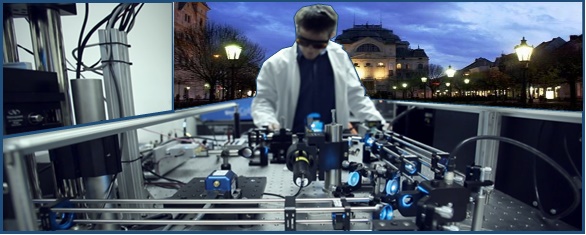SAFTRA photonics has also completed the procedure for the standardisation process of the PickMolTM technology to verify it as an approved reference method for high-sensitive screening of Persistent Organic Pollutants (POPs) (pollutant molecules) in water samples in a mode of MULTIPLEXING ANALYSIS. The validation tasks were performed according to the “Validation of environmental test methods CEN guide 2013”. The procedure has presented the reliability of particular measurement steps based on the comparative trials performed by validated LCMS technology.
The PickMolTM technology is based on plasmonic-enhanced Raman scattering (PERS) and is represented by a construction of particular topology/structure of nano-optical chip. The “multiplexing chip” is capable to detect multiple organic molecules with different concentration level in water sample. Three different molecules (Paraquat – PQ, Diquat – DQ and Thiram – TR) were tested to be simultaneously detected in the solutions of the PQDQTR (aq) mixture at different concentrations (from 10-5 M to 10-7; PQ: DQ: TR = 1: 1: 1). These solutions were analysed by the same time by HPLC-MS-MS and PickMolTM technology. We have carried out 3 measurements (with 3 different PickMol chips) for every stock and working solution. The measurements were repeated for each “Parallel”. In total, we have tested the presence of PQ, DQ and TR (of different concentration) on 30 different chips. The “Blank” sample measurements were provided with the use of pure (Milli-Q) water.
Conclusions
Technical report demonstrates the standardisation process of PickMolTM technology applied for multiplexing chip based on the verification by LCMS-QTRAP hybrid technology as standard validated method for POPs/pesticides analyses in water. PickMolTM technology is shown as powerful screening tool for ultrafast analyses in the environment. Complete measurement protocol from sampling to data processing is achieved within 10 min and real sample analysis time is 2 minutes.
The confirmation of target analyte (pollutant) is performed by the presence of characteristic Raman bands of the detected molecules. Two different HPLC-MS-MS conditions /mobile phase composition and gradient elution profile/had to be used first for identification PQ, DQ and second one for Thiram analyses. The single analysis performed by PickMolTM multiplexing nano-optical chip clearly demonstrates the benefits in term of sample preparation costs, equilibration time and price of analysis.
The technical report represents a validation procedure for “multiplexing chip” which is capable to detect multiple organic molecules with different concentration level in water sample. At higher concentrations (10-5 M and 10-6 M) of the analysed PQDQTR (aq) solution (PQ: DQ: TR = 1: 1: 1), all three molecules (PQ, DQ, TR) were positively detected (the intensities of their characteristic Raman bands were above the set 3Sigma limit) by means of PickMolTM technology. PQ and DQ were observed/detected in the Raman spectra recorded for the PQDQTR (aq) mixture at 10-7 M concentration as well. In case of Thiram, the screening threshold of employed nano-optical chip appeared at 10-6 M concentration of analyte.
Validation report available upon request: roman.oros@saftra-photonics.org


